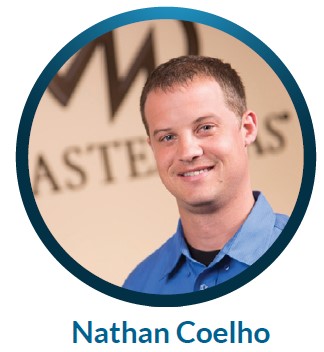membership
APSP-14: What it is and why it should matter to you
No matter where you fit in the industry, the Department of Energy has a critical regulation hanging in the balance for early 2023 that could affect the hot tub or spa business
The Department of Energy (DOE) has been moving quickly under the Biden Administration to enact more efficiency rules across industries – and that has been no different when it comes to parts and products used by the pool and spa industry.
The ANSI/APSP/ICC-14 American National Standard for Portable Electric Spa Energy Efficiency, sometimes just called “the standard,” is the foundation of swim spa and hot tub energy efficiency. Unlike other products people use at home – kitchen appliances or electronics – spas and hot tubs have not been subject to the same level of federal regulation, instead getting their oversight by manufacturers or states.
Recently, however, the DOE has taken a closer look at portable electric spas.
What is APSP-14?
The APSP-14 Standard examines five main areas related to energy efficiency for spas and hot tubs:
- Testing procedures and methods that confirm manufacturers’ claims
- Energy labels that help consumers compare models
- Reduced energy consumption, in line with some existing state requirements
- Ways to compare energy efficiency on spas of different sizes, giving small and large models a single source of truth
- Creating third party verification and validation procedures for testing and clear pass/fail criteria
“This is a consensus-based standard. It’s like the Good Housekeeping Seal of Approval,” says Justin Wiley, Pool & Hot Tub Alliance (PHTA) Vice President of Government Relations, Standards, and Codes.
Where does PHTA stand on the topic?

PHTA has been advocating for APSP-14 for over a decade because it “levels the playing field” for all manufacturers by making a minimum threshold of energy efficiency for the entire U.S.
It also “provides an avenue for the federal government to enforce dumping of substandard products from overseas into a market that has decided to take energy efficiency seriously,” Wiley explains. Currently, state-level standards don’t have the enforcement that federal government ones would. If APSP-14 were incorporated into a final DOE rule, U.S. Customs and Border Protection would begin enforcing the rules at import.
In addition to states that have portable spa energy efficiency requirements on the books, APSP-14 is also referenced in the International Energy Conservation Code and the International Swimming Pool and Spa Code which are adopted and enforced at state and local levels. Building codes are not always straightforward, however, as provisions can either be removed or simply not enforced by the jurisdiction having authority.
Why is this a hot topic now?
Earlier this fall, DOE issued a notice that portable electric spas qualify as a covered consumer product under the Energy Policy and Conservation Act because the average U.S. household energy use is likely to exceed the 100 kilowatt-hours per year threshold. Effective as of November, that ruling opened the door for DOE to regulate.
That has escalated the bureaucratic processes and fact-finding with DOE and other agencies. APSP-14 could be accepted as-is, modified, or discarded following this period. With major deadlines in December and January, action is expected to occur in the first half of 2023, although final regulations will take longer.

Nathan Coelho, Vice President of Engineering at Master Spas, who was interviewed by DOE consultants and chairs the International Hot Tub Association Engineering Committee dedicated to this topic, says his best guess is that the majority of APSP-14 will be accepted. Exactly how much is yet to be determined.
One area Coelho says is being discussed is test protocols, which currently require manufacturers to validate their efficiency at 60 degrees as the average ambient temperature for operating a hot tub or spa.
“The idea of going back and retesting would be a challenge,” he says. “I don’t think people really appreciate how difficult it is to meet the pass/fail line.”
How does this fit with current state legislation?

Currently, states have the right to regulate and establish rules for energy efficiency in all forms of products. States vary widely on their restrictions and demands [see graphic below]. Take California for example. In the past, California has acted as “the standard bearer for advancing legislation and influencing the DOE,” says Michael Michaud, Executive Director of the Hydraulics Institute, the global authority on pumps and pumping systems, which have also been evaluated by DOE this year.
“The preferred way to go is to work on this from a national perspective. Manufacturers can develop their processes to meet the standard, but if they have to develop 20 different processes for 20 different standards then that’s just a nightmare,” Michaud explains.
How do manufacturers feel about APSP-14?
Many manufacturers see a major marketing upside in ensuring and explaining energy efficiency to consumers. They point to the ENERGY STAR certification program that has made it clearer which home appliances stand out in a crowded market.

PHTA board member Tracine Marroquin, Vice President of Marketing at the Jacuzzi Group, says they support the federal regulation for its better enforcement and visibility. Jacuzzi already builds to the standard. “Manufacturers are impacted because it influences every decision we make,” she says, from initial design to marketability.
Harmonizing hot tub and spa manufacturing regulations across the U.S. also streamlines supply chain and engineering decisions, adds Coelho, pointing out 100% of Master Spas products are already APSP-14 compliant.
“It’s the right way to build the product in our eyes,” Coelho says.
Being right doesn’t make it easy. Many component inputs to efficient hot tubs and spas have been especially affected by supply chain- and inflation-related cost increases.
“It does create a challenge to the manufacturer when we know price point is important to the consumer,” Marroquin says. “Materials to insulate the spa, and other manufacturing means to make it more energy efficient, raise the price point of the spa.”
How are others impacted?
Retailers who have ongoing questions about product would have easier access to answers, Marroquin says: “The product will be marked. And to the consumer, it’s not just trusting the salesperson or even trusting the manufacturer.”
Some retailers, however, will have to change how they source their hot tubs and spas. Marroquin’s take is that “retailers also hold some responsibility here on the manufacturers that they select to buy.”
What else is being affected besides legislation?
In short: Administration. Every state or federal rule around efficiency comes with its own set of processes for reporting and compliance. For instance, the California Energy Commission requires a separate database from the federal government for listing spa products and their components. The work can be onerous and confusing, says Michaud.
"The people that are spending the time putting the insane amount of resources into what it takes to comply want things straight and want it to be clear." - Nathan Coelho, Vice President of Engineering at Master Spas
“I don’t think states particularly understand the manufacturing process and supply chains and how hard it is to give the info they are asking for. So far, the states involved have been happy to work with organizations to explain their administrative standards,” Michaud explains, pointing out that frequent component changes due to raw materials shortages and supply chain disruption make manual database updates in every state tedious. “If each state starts doing their own thing, that won’t be practical.”
Compliance at the state or federal level, though, is just one more means to enforcing rules and making an even playing field, Coelho maintains.
“The people that are spending the time putting the insane amount of resources into what it takes to comply want things straight and want it to be clear.”
How is PHTA proceeding?
Wiley says PHTA has been incredibly active with federal regulators to close out the year, including responding to requests for comments on:
- definitions, a test procedure, and sampling requirements for portable electric spas to DOE,
- data availability of analytical results related to DOE’s investigations, and
- the Federal Trade Commission’s consideration of adding portable electric spas to the Energy Label program.
PHTA leadership and members are closely involved in the ongoing discussions and continue to work to support the standard at all levels.
“PHTA has taken the right approach,” Marroquin says, “which is that we haven’t backed off at all on getting additional states to adopt (the standard) while we’re working on the federal one as well.”








